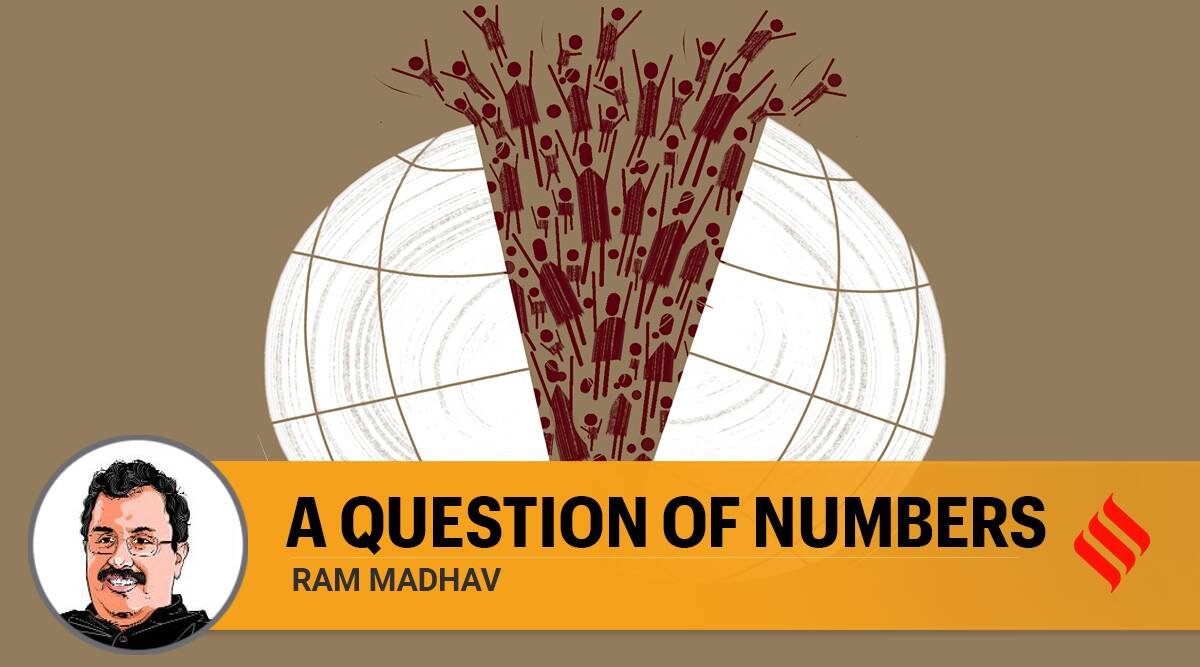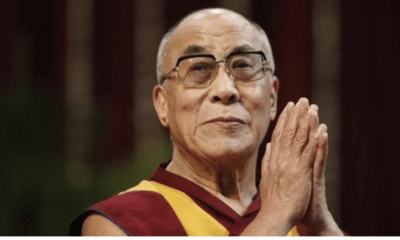
|
Getting your Trinity Audio player ready...
|
(The article was originally published by Indian Express on November 5, 2022 as a part of Dr Madhav’s bi-weekly column titled ‘Ram Rajya’. Views expressed are personal.)
On November 15, the world population will cross eight billion — it crossed six billion in October 1999 and we added another two billion in two decades. Demographers at the UN predict that the planet will have 9.8 billion people in 2050 and 11.2 billion by 2100.
India will be the world’s most populous country by 2050 with its population crossing 1.65 billion. China will see a decline in that year and its population will reduce to 1.3 billion. India will peak in that decade and thereafter, the numbers will start to recede and settle at 1.1 billion by 2100.
For some demographers, population concerns are ill-founded. Rachel Snow of the UN World Population Fund, for example, says that the world population growth is slowing down with more than 50 countries registering a population decline. Contrary to the UN’s projection of 11.2 billion people on the planet by 2100, Snow insists that it would reduce to 8.5 billion by then. “Eight billion people is potentially eight billion new ideas that will increase food production, very cool ways for people to learn on the internet… I am much more optimistic,” she says.
Superabundance, a new book published by Cato Institute earlier this year, argues that population growth was actually a good thing. “On average, every additional human being created more value than he or she consumed. This relationship between population growth and abundance is deeply counterintuitive, yet it is true,” authors Marian Tupi and Gale Pooley argue.
Not all agree with the “optimists”. Many rightly believe that more people means more mouths to feed, more exploitation of resources and more carbon emissions, which are detrimental to nature. Prime Minister Narendra Modi flagged this concern a couple of years ago. Cautioning that population explosion will cause many problems to future generations, he lauded those who stop “to think before bringing a child to the world, whether they can do justice to the child, give them all that she or he wants”. Having “smaller families is also a form of patriotism,” he said.
Most people tend to agree with PM Modi’s observations. But demographics is a complex, and often contentious, subject. Incidentally, the developed West and China took a grim view of population growth in the last century and attempted population control. By the turn of this century, both countries witnessed low birth rates and consequently, a slowing down of population growth.
But at the same time, countries in the developing world, including in the Middle East and Africa, continue to register higher population growth rates. It is projected that by 2100, close to 40 per cent of the world population will be residing in Africa. That is every second person in the world will be an African. Similarly, countries in the Muslim world are registering higher population growth rates – 1.5 per cent, compared to the rest at 0.7 per cent. The Muslim population in the world is expected to reach 2.2 billion by 2030, according to the PEW Research Foundation. Egypt, the largest Arab country, had a population of 25 million in 1960, almost equal to that of South Korea. Six decades later, while South Korea’s population doubled, Egypt’s grew by more than four times to cross 110 million.
PEW data projects the global Muslim population to be 2.8 billion (30 per cent of the world) by 2050 and the Christian population to be 2.9 billion (31 per cent). Hindus will constitute around 15 per cent of the world population by then.
Data on religion needs to be carefully analysed. Between 2010 and 2050, about 750 million Christians and 350 million Hindus will be added to the world population. But in the corresponding period, about 1.2 billion Muslims will join the global population. In the four decades, the Christian share of the world population is projected to remain at 31.4 per cent while Hindus’ share will decrease from 15 per cent to 14.9 per cent. But the share of the Muslim population will increase from 23.2 per cent to 29.7 per cent.
India too cannot duck this trend. By 2050, India is expected to have over 1.3 billion Hindus, while the Muslim population is likely to reach 311 million, making it the country with the largest Muslim population.
It is here that the recent call given by RSS chief Mohan Bhagwat for “a comprehensive population control policy, which should apply to all equally, and no one should get any concessions”, becomes relevant. Drawing attention to the challenges of unbalanced population growth, Bhagwat cited the creation of new countries like East Timor, South Sudan and Kosovo and said “when there is a population imbalance, new countries are created. Countries are divided”.
There is a silver lining though. Globally, the population growth rates are declining and that includes Muslim populations as well. Although they continue to be high when compared to other communities, the fertility rates among Muslims too are falling. This trend was underscored by the National Family Health Survey in India. The total fertility rate (TFR) — the number of children each woman gives birth to — is a scientific way of projecting population growth. The TFR at around 2.2, with each family having a minimum of two children, is considered a balanced demographic growth. In 1951, the TFR among Muslims was over 5.4 and that among Hindus was over 3.2. According to recent data, the corresponding figures for Muslims and Hindus have dropped to 2.36 and 1.94 respectively.
French philosopher Auguste Comte’s comment, “demography is destiny”, may not be completely true, yet different interested parties interpret it differently. A warped understanding of Comte leading to viewing women as reproductive machines must change.
The population will continue to grow, but it needs to be balanced growth. In our eagerness to make it “destiny”, we shouldn’t make it into a peril. We should be able to provide better living standards to the generations to come. We need five earths if everyone were to live like an American. As Gandhi said, nature can offer a free lunch, if only we control our appetite. The Indian answer will be sustainable consumption.



